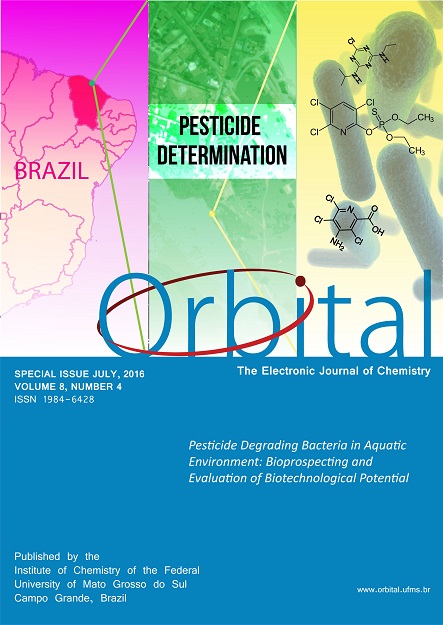Influência do Uso de Imidacloprido na Qualidade das Águas e Sedimentos da Micro-bacia do Rio do Carmo
- imidacloroprid,
- water quality,
- melon,
- water,
- anthropogenic activities
Copyright (c) 2016 Orbital: The Electronic Journal of Chemistry

This work is licensed under a Creative Commons Attribution-NonCommercial-NoDerivatives 4.0 International License.
Abstract
The evaluation parameters such as heavy metals and pesticides molecules in aquatic environments, facilitates the determination of the level of pollution by subsidizing their identification and origin. The melon (Cucumis melo L.) is one of the vegetable crops of greater economic importance in Brazil, especially in the Northeast, and the main factors contributing to its production, are associated with particular climatic conditions such as high temperatures, high luminosity and low soil moisture. The agricultural pole of the city of Mossoro is the largest melon producer in the region making it one of the largest consumers of imidacloprid (I) of the country due to its use in pest control whitefly. Thus, in order to maintain the quality standards of water resources and due to deficiency of information on the presence of pesticides in the aquatic environment of the area surveyed and on the environmental liabilities generated by activity of melon for the rivers of the region, this work determined the concentration of I in the Carmo River water and sediment. The results found in water and sediments are high and influenced by human activities, especially monoculture melon and may be causing serious environmental problems of the river fauna.

